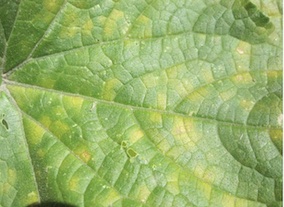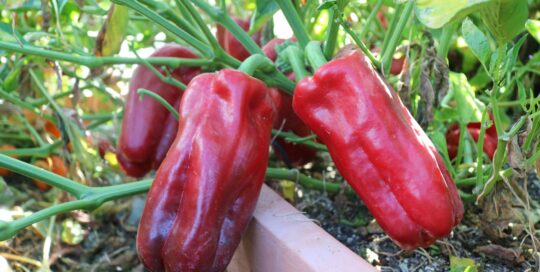Cucurbit Downy Mildew
Views: 348

Cucurbit Downy Mildew has been spotted in New Hampshire. That’s the announcement that came into my inbox earlier this week from the University of Massachusetts Extension Program. Not really knowing what Cucurbit Downy Mildew is compared to other mildews that might strike my cucumbers and other crops in the cucurbit family, I decided to investigate.
What is Cucurbit Downy Mildew?
Cucurbit Downy Mildew is a downy mildew occurring on cucumbers, melons, squash, pumpkins and others in that family. It is caused by Pseudoperonospora cubensis, a fungus-like oomycete that occurs worldwide. It’s not a surprise that this Downy Mildew has popped up in the Northeast. The weather conditions have been just right: cloudy, cool and humid. These damp conditions also help spread P. cubensis spores.
Signs and Symptoms
If your cucurbits have this infection, it will appear as angular yellow or brown splotches on the top sides of the leaves. The “angular” aspect means that the yellowing or browning spots are confined by the linearity of the leaf veins. If you look at the underside of the leaf, you’ll notice some grayish fuzz. This is the infection’s sporulation—i.e., it’s reproducing and spreading!
How to Manage Cucurbit Downy Mildew
You spot Cucurbit Downy Mildew in your garden. Now what? Well, don’t delay. Chances are that a lot of the crops in your garden are in the cucurbit family. Letting one patch of Cucurbit Downy Mildew sit idle for a day or two means it has time to spread. This puts a great deal of your garden’s harvest at risk of dying.
Managing Cucurbit Downy Mildew means removing the affected leaves. Remove entire plants if you have to. This isn’t a once-and-done deal. Carefully monitor your crops every day and keep an eye out for the angular spots and gray undersides.
If the spread of Cucurbit Downy Mildew outpaces your manual leaf/plant removal, fungicides won’t work on P. cubensis because it is not a fungus but a water mold. Check with your own local extension program to see if there is a conventional control method that is approved for your state.
How to Prevent
P. cubensis spores travel through the air, so it’s difficult to completely prevent its spread. But you can make it harder for those spores to hit their preferred targets.
- Give plenty of space between plants to encourage air flow—so those spores blow away.
- Try trellising your plants to pick them up and off the ground.
- Water the ground at the base of the plant, and avoid allowing leaves to stay wet overnight.
P.s. I am “borrowing” the above photo from the folks at University of Massachusetts Center for Agriculture, Food and the Environment. Thanks for helping me illustrate this to my readers!
Meet Ellen Wells
When you’re raised on a farm, you can’t help but know a thing or two about gardening. Ellen Wells is our expert on edible gardening.…
Ellen's Recent Posts

Pepper Red Impact an All-America Selections Winner






